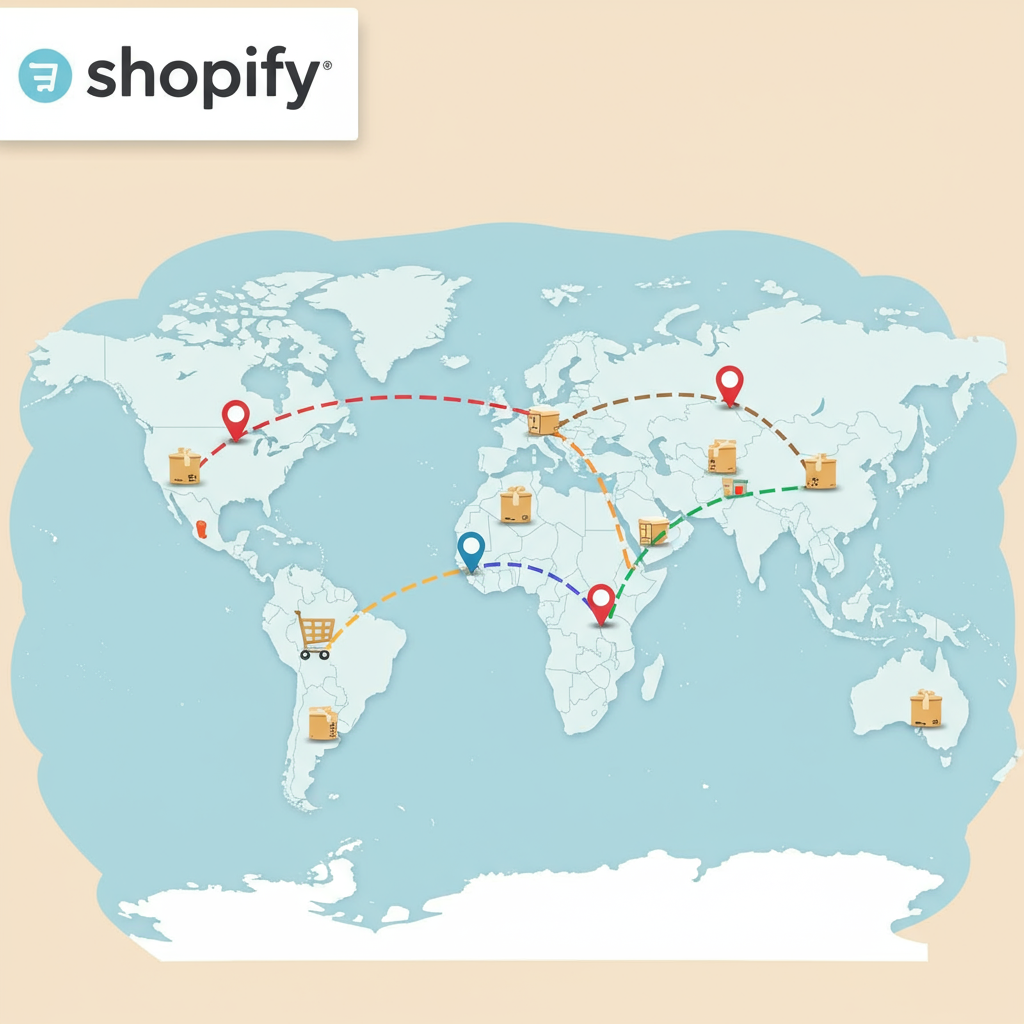Unlocking new markets and mastering cross-border fulfillment for your Shopify store.
As a Shopify merchant, I’ve always been excited by the prospect of reaching customers beyond my local borders. The global market is vast, and the potential for growth is immense.
However, I know firsthand that international shipping can seem like a daunting challenge. There are so many variables: customs, duties, different carriers, and varying regulations.
Over time, I’ve developed a robust strategy for handling international orders on Shopify, and I want to share my insights and best practices with you.
My goal is to demystify the process and help you confidently expand your business worldwide.
The first step in my international shipping strategy is always thorough research and planning.
I begin by identifying potential target markets. Where are my products in demand? Which countries have favorable import regulations or a strong e-commerce presence?
It’s crucial to research each country’s specific import restrictions, prohibited items, and any unique legal requirements for selling goods there.
This initial homework saves a lot of headaches down the line, preventing costly returns or customs delays.
Next, I focus on choosing the right shipping partners. You’ll need reliable carriers that can handle international logistics.
Major global players like DHL, FedEx, and UPS are excellent for their speed, tracking, and comprehensive customs services.
However, I also consider national postal services, such as USPS, Royal Mail, or Canada Post, especially for lighter, less urgent packages, as they can be more cost-effective.
I often use a mix: express carriers for premium, time-sensitive deliveries and postal services for standard, budget-friendly options.
It’s vital to compare their rates, transit times, tracking capabilities, and their support for customs clearance.
Setting up shipping rates on Shopify is a critical component. Shopify offers great flexibility here.
I primarily use calculated rates for international shipping. This pulls real-time rates directly from the carriers based on package weight, dimensions, and destination.
Flat rates can work for specific product types or regions if you’ve meticulously calculated your average shipping costs to avoid losses.
Offering free international shipping can be a huge conversion booster, but remember to factor these costs into your product pricing to maintain profitability.
This is where many merchants stumble: mastering customs, duties, and taxes. Understanding DDP (Delivery Duty Paid) versus DDU (Delivery Duty Unpaid) is absolutely crucial.
DDU means the customer is responsible for paying duties and taxes upon delivery. This can lead to unexpected fees for the customer, potentially resulting in abandoned packages or negative experiences.
DDP means you, the merchant, collect the estimated duties and taxes at checkout and pay them on behalf of the customer. This provides a much smoother, transparent customer experience.
I highly recommend implementing DDP where possible, often through specialized apps or carrier services that facilitate this process.
Always include accurate HS (Harmonized System) codes for your products on customs forms. These codes classify your goods for customs purposes worldwide.
Provide detailed product descriptions and accurate values. Honesty and precision are key to avoiding delays or penalties.
International packages endure a lot during transit, so I always invest in durable, appropriate packaging.
Clearly label packages with complete recipient and sender information, all necessary customs forms, and the tracking number.
Double-checking addresses is paramount. A small error can cause significant delays or even lead to the package being returned to you.
Providing tracking numbers immediately after shipment is non-negotiable. Customers expect to follow their international orders every step of the way.
I also make an effort to proactively communicate any potential delays or customs issues to my customers. Transparency builds trust.
Having a clear, concise international return policy is essential. Outline who pays for return shipping and how refunds are processed.
This policy should be easily accessible on your Shopify store, as it helps build customer confidence and reduces customer service inquiries.
Shopify’s native multi-currency feature is a game-changer. It allows your store to display prices in the customer’s local currency, improving their shopping experience.
I also explore apps like Shopify Markets, which offers advanced features for international selling, including localized experiences and duty calculation.
Shipping apps (e.g., ShipStation, Easyship) can automate label creation, rate comparison, and even help with customs documentation, streamlining my workflow significantly.
Finally, be prepared for international customer inquiries. Time zone differences can be a challenge, so consider offering support during extended hours or via asynchronous channels.
If feasible, provide support in multiple languages, or utilize reliable translation tools to ensure clear communication.
Patience and clear communication are paramount when dealing with international customer service.
Expanding internationally with Shopify is a journey, but it’s an incredibly rewarding one.
By planning meticulously, choosing the right partners, and leveraging Shopify’s powerful features and apps, you can conquer the complexities of global shipping.
It truly opens up vast new customer bases and significant growth opportunities for your business.
What do you think about this article? Did I cover everything you were hoping for?
I hope my insights help you confidently ship your products worldwide and achieve your global e-commerce ambitions.






